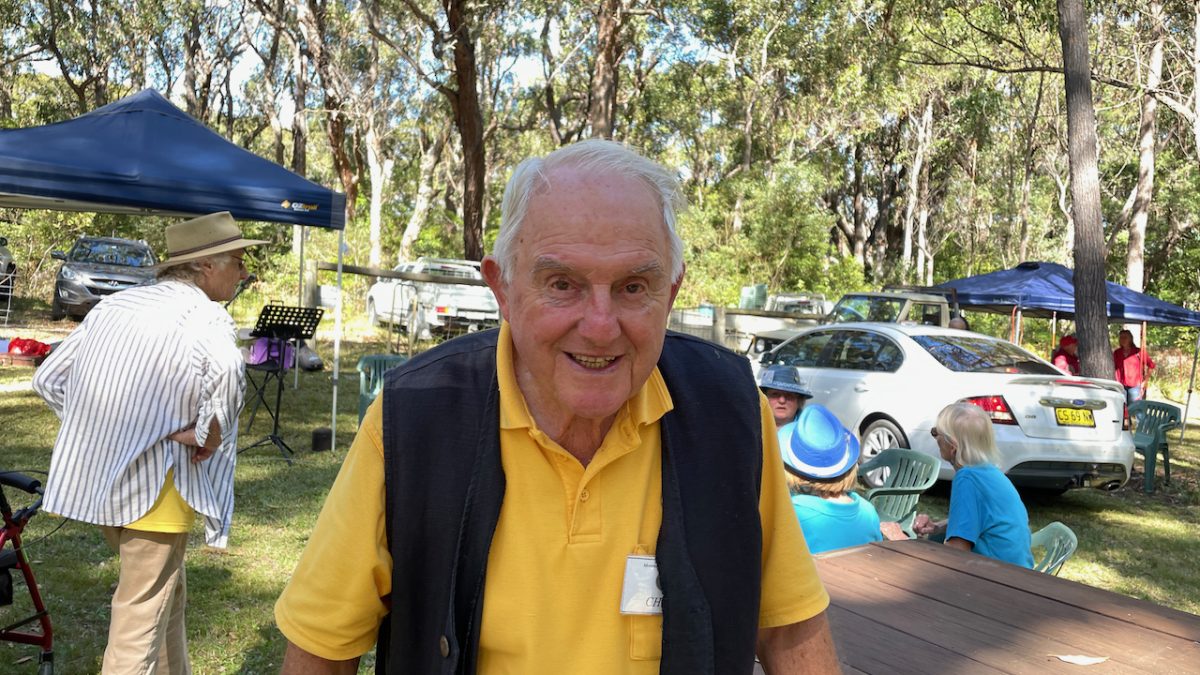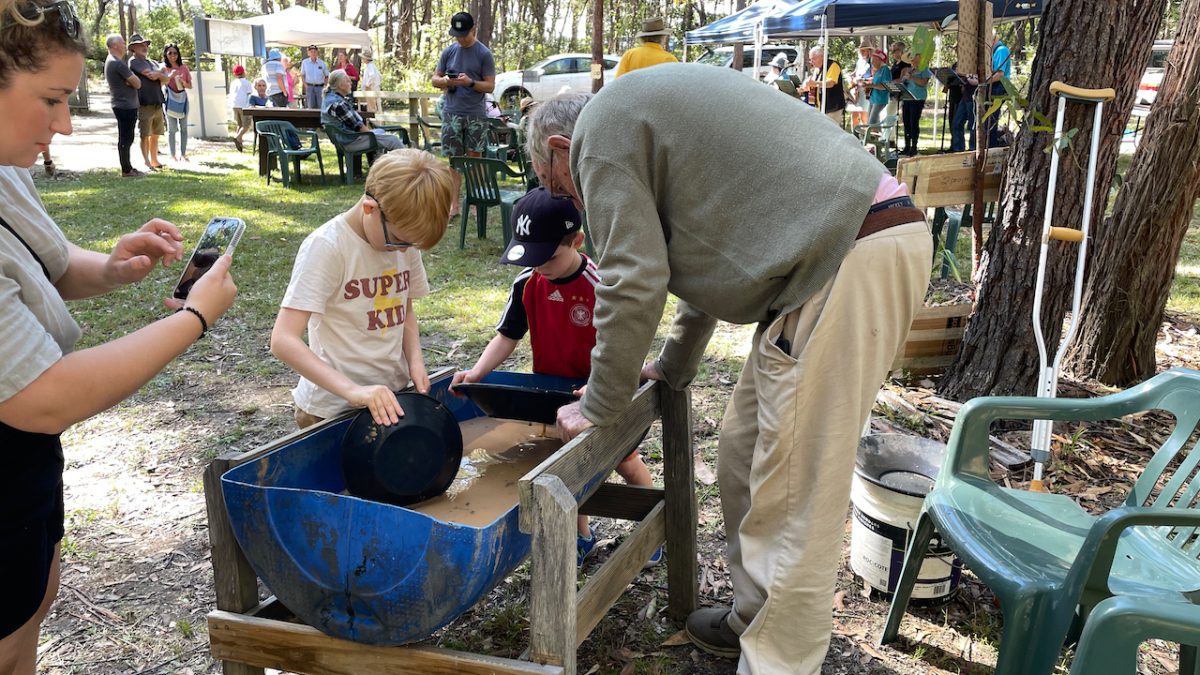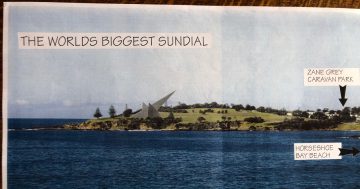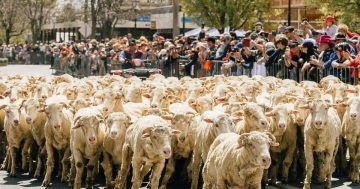
Chris Franks, president of the Montreal Goldfield Management Committee, has been taking people on guided tours of the goldfield since it opened to the public in 2005. Photo: Marion Williams.
Montreal Goldfield is a living museum. It is one of only two goldmines developed on a beach in the Southern Hemisphere. Thanks to its geology, it is the most intact goldfield in southeast NSW. It has not been farmed or grazed since being clear-felled in 1880 so the original seed bank, left undisturbed, has grown back to what Captain Cook would have sailed past in 1770.
Some of Montreal Goldfield’s intriguing history has been captured in a film to be launched in Bermagui on 10 October.
When gold was discovered by Canadian Henry Williams in September 1880, it triggered a true gold rush. At the time, there were perhaps just seven families living in Bermagui. Within weeks of news that gold could be found only a few feet below the sand on the beaches north of Bermagui, 2000 people had arrived to make their fortune. That is more than Bermagui’s population today.
Many came by steamers that carried cargo from Sydney to the remote Far South Coast. It was likely standing-room only on the 16-hour passage to Bermagui. They clambered into smaller boats at Horseshoe Bay to reach land. Then it was a four-mile (6.4 km) hike to the goldfield.
Their first stop was at the Mining Office to register their claim. It cost 10 shillings, the equivalent of a labourer’s wage for a week and a half, for a year’s licence to mine an area 12-foot square (1.1 sqm).

Bob Hearn showing how to pan for gold at a Montreal Goldfield community day in April 2023. Photo: Marion Williams.
The gold along the beach between Camel Rock and Keating Headland was quickly exhausted. Some of the smarter prospectors had worked out that the gold was coming from an underground river.
They tried digging tunnels in the sand towards Gulaga Mount Dromedary, where the first gold reef had been found in 1877. Tunnelling proved to be unstable and dangerous. Instead, they dug from the surface to find the riverbed where the gold was.
It was hard and dirty work. The storekeepers who sold tools, food and other provisions did well though, as did the three publicans who quickly opened for business after gold was discovered.
Montreal Goldfield is famous for the disappearance of mining surveyor Lamont Young, his assistant Max Schneider and three men from Batemans Bay. On Saturday, 9 October, 1880, they set off in a boat to investigate reports of gold at Corunna Point, some nine miles (14.5 km) to the north. A day later, their boat was found pulled up on the shores of what is now called Mystery Bay. It had obviously been deliberately broken up by someone rather than damaged on the rocks.
It was a botched and sloppy investigation, with all and sundry trampling over the crime scene. Back in England, Lamont Young’s family set a handsome reward for information to uncover what fate had befallen him. The bodies of the five men were never found, the reward never claimed, and the mystery remains unsolved to this day.
The goldfield itself is something of a mystery. Local historian Judi Hearn travelled to Sydney to inspect the mining archives and gleaned little from them. Much of the guides’ understanding has come from old mining songs and literature such as Henry Lawson’s The Golden Graveyard. As her fellow tour guide Bill Southwood explained, much of the information has to be inferred, rather than obtained directly from the goldfield.

Illustrations of the buildings at Montreal Goldfield around late 1880, taken from sketches in the newspapers of the day. Photo: Judi Hearn.
The 40-minute film was made by international producer and Far South Coast resident Hiromi Matsuoka. It features three Montreal Goldfield stalwarts – Chris Franks, Ms Hearn and Mr Southwood. Between them and their colleague Peter Baxter, they have been guides at the goldfield for a total of almost 75 years.
Also in the film are Garry and Paul Campbell, who explain the significance of Gulaga to the Yuin people. Bermagui resident and mining exploration geologist Carl Swenson talks about the geology of the specific type of gold mined at Montreal.
The film includes sketches by famous gold rush artist S T Gill and photographs by Tilba’s William Corkhill. Together, they help illustrate the miners’ working and living conditions in the mine’s heyday.
After seeing the film at 6:30 pm on 10 October at Bermagui Country Club, people may be keen to learn more, join a guided tour of Montreal Goldfield or even become a volunteer there. Tours run at 2 pm, Thursday to Sunday.










